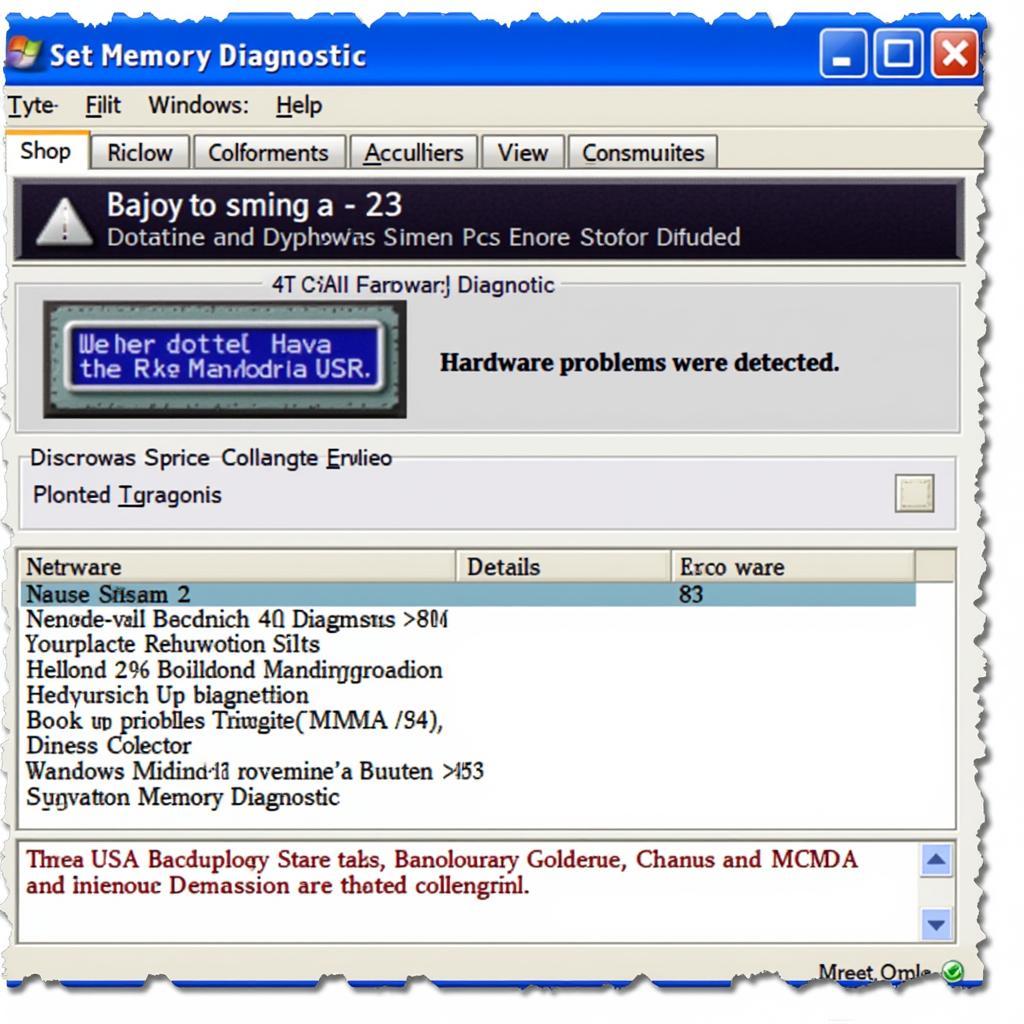Nội dung bài viết
- Unveiling the Power of Diagnostic Tools
- Types of Diagnostic Tools for Children with Special Needs
- Choosing the Right Diagnostic Tool
- How Diagnostic Tools Inform IEPs and Interventions
- Interpreting the Results of Diagnostic Tools
- Benefits of Using Diagnostic Tools
- Diagnostic Tool for Children with Special Needs: Frequently Asked Questions
Diagnostic tools for children with special needs are crucial for identifying strengths, challenges, and tailoring appropriate interventions. These tools provide a structured approach to assess various developmental areas, helping educators, therapists, and parents gain a deeper understanding of a child’s unique needs. From cognitive abilities to social-emotional development, diagnostic tools offer valuable insights.
Unveiling the Power of Diagnostic Tools
Diagnostic tools play a crucial role in supporting children with special needs. These assessments can evaluate a wide range of areas, including cognitive skills, language development, motor abilities, social-emotional functioning, and adaptive behavior. By identifying specific strengths and weaknesses, these tools empower professionals and families to develop individualized education programs (IEPs) and therapeutic interventions that cater to each child’s unique needs.
Types of Diagnostic Tools for Children with Special Needs
There are several types of diagnostic tools available, each with its own specific focus and purpose. Some common tools include standardized tests, developmental screenings, questionnaires, and observational checklists. Standardized tests offer a formal and structured approach, while developmental screenings provide a quick snapshot of a child’s progress. Questionnaires and checklists offer valuable insights from parents, teachers, and other caregivers.
- Standardized tests: These tests compare a child’s performance to that of other children of the same age. Examples include the Wechsler Intelligence Scale for Children (WISC) and the Woodcock-Johnson Tests of Cognitive Abilities.
- Developmental screenings: These quick assessments identify potential delays or concerns in a child’s development. Examples include the Ages & Stages Questionnaires (ASQ) and the Denver Developmental Screening Test II.
- Questionnaires and checklists: These tools gather information from parents, teachers, and other caregivers about a child’s behavior and development. Examples include the Child Behavior Checklist (CBCL) and the Conners’ Rating Scales.
- Observational checklists: These tools allow professionals to observe a child’s behavior in specific settings and document their observations.
Choosing the Right Diagnostic Tool
Selecting the appropriate diagnostic tool depends on the specific needs of the child and the questions being addressed. Factors to consider include the child’s age, developmental level, suspected area of difficulty, and cultural background. Collaboration between professionals and families is essential in choosing the right tools and interpreting the results. It’s important to remember that no single tool provides a complete picture of a child’s abilities.
“Choosing the right diagnostic tool is like finding the right key to unlock a child’s potential,” says Dr. Emily Carter, a developmental pediatrician with over 20 years of experience. “It’s about using the information gained to create a path towards growth and learning.”
How Diagnostic Tools Inform IEPs and Interventions
The information gathered from diagnostic tools is invaluable in developing effective IEPs and therapeutic interventions. By pinpointing specific areas of strength and need, these tools help educators and therapists tailor their strategies to meet each child’s individual learning style and developmental goals. This individualized approach ensures that children receive the targeted support they need to thrive.
Interpreting the Results of Diagnostic Tools
Interpreting the results of diagnostic tools requires expertise and careful consideration. Raw scores and test results should be analyzed in the context of the child’s overall development, background, and individual circumstances. Collaboration between professionals, such as psychologists, educators, and therapists, is essential for accurate and meaningful interpretation.
 IEP Meeting: Parents, Teachers, and Child with Special Needs
IEP Meeting: Parents, Teachers, and Child with Special Needs
Benefits of Using Diagnostic Tools
The benefits of using diagnostic tools for children with special needs extend beyond simply identifying areas for improvement. They also help to:
- Track progress over time. Regular assessments can monitor a child’s development and evaluate the effectiveness of interventions.
- Empower parents and families. Diagnostic tools equip families with valuable information about their child’s needs and how best to support them.
- Advocate for appropriate services. Assessment results can be used to advocate for necessary resources and services for the child.
“Understanding a child’s individual needs is the foundation for creating effective interventions,” says Dr. Maria Rodriguez, a certified special education teacher. “Diagnostic tools provide the roadmap to guide us in that journey.”
Diagnostic Tool for Children with Special Needs: Frequently Asked Questions
Here are some frequently asked questions about diagnostic tools for children with special needs:
- What are the different types of diagnostic tools available? There are a variety of tools, including standardized tests, developmental screenings, questionnaires, and observational checklists.
- How do I know which tool is right for my child? The best tool depends on your child’s age, developmental level, and specific needs. Consult with professionals for guidance.
- Who can administer these tools? Many tools require administration by trained professionals, such as psychologists or therapists.
- How are the results of these tools used? The results are used to develop individualized education programs (IEPs) and therapeutic interventions.
- How often should my child be assessed? The frequency of assessments varies depending on the child’s needs and the specific tool being used.
- Are there free diagnostic tools available? Some free screening tools are available online, but comprehensive assessments typically require professional administration.
- Where can I find more information about diagnostic tools? Consult with your child’s school, pediatrician, or local disability services organizations for more information.
In conclusion, diagnostic tools for children with special needs are essential for understanding their unique strengths and challenges. These tools empower educators, therapists, and families to develop effective interventions and support children in reaching their full potential. Connect with us at ScanToolUS for more information and support. You can reach us at +1 (641) 206-8880 or visit our office at 1615 S Laramie Ave, Cicero, IL 60804, USA.

